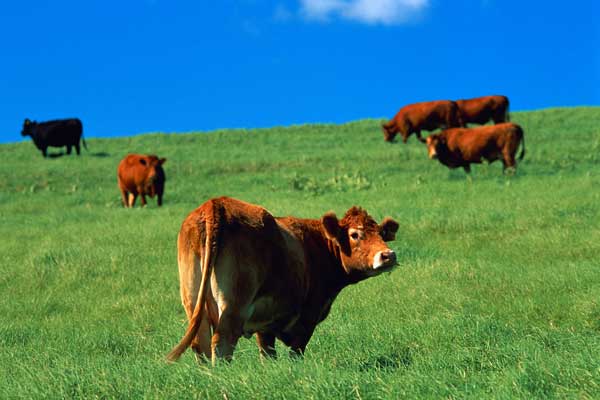
A classic case of supply and demand is predicted for the cattle market in 2012.The historic drought this year marked the biggest one-year decline in Texas cow numbers ever with more than 600,000 sold by cattle producers.Slaughter steer prices hit a high of $125 per hundredweight in April and a low of $105 in June.
December 7, 2011

A classic case of supply and demand is predicted for the cattle market in 2012, according to a Texas AgriLife Extension Service economist. Declining cow numbers due to drought will lead to fewer calves, causing tighter supplies across the U.S., said Dr. David Anderson, AgriLife Extension livestock economist.
“I think we will continue to maintain historically high prices,” Anderson said recently at the Brock Faulkner-Brazos Valley Fall Cattleman’s Clinic in Bryan. Anderson said his 2012 target prices for 600-pound steers are $131 to $138 per hundredweight during the first quarter, $136 to $144 in the second quarter,$137 to $147 in the third quarter and $133 to $143 in the fourth quarter.
The historic drought this year marked the biggest one-year decline in Texas cow numbers ever with more than 600,000 sold by cattle producers, Anderson said.“What does this mean? We’ve got fewer cows and calves, which means higher prices,” Anderson said. Cattle on feed numbers are high, which is consistent with a drought. Feedlots have been “staying current,” he said, selling animals to packing operations at a steady clip.
Meanwhile, slaughter steer prices hit a high of $125 per hundredweight in April and a low of $105 in June, Anderson said. “They went back up to $119 per hundredweight in October.” That’s likely the result of buyers making sure enough beef is in grocery stores to satisfy first-of-the-month specials. “Prices shoot forward, then back off as grocery outlets buy what they need, then pull back due to the economy.”
Nationally, a 12 percent decline in 2011 in beef cow inventory is the second largest decline in history since 1934-1935 (18 percent), as 550,000 head of cows were sold off during that time. In 1996, a decline of approximately 400,000 cows was recorded during that drought year, Anderson said.
“In 2012, beef production is predicted to be down 4 percent,” he said. The choice-select spread has choice beef selling for “huge amounts” more than select because exports are booming, Anderson said. “We have growing demand for choice beef.” Wal-Mart, the largest grocery retail outlet in the U.S., is also selling more choice beef. Trends of consumer buying patterns indicate during the beginning of the recession in 2008 consumers were trying to “stretch their dollar by buying more hamburger," he said. “As a result, hamburger, chuck and rounds have reached record prices.”
However, there’s been growing demand for steaks, Anderson said, so “perhaps the economy is not as bad as some might think since there is some willingness to buy more steaks.”
You May Also Like



